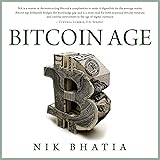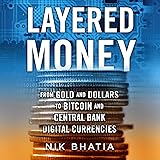Is the Cryptocurrency Market Truly Exploding in 2025? Here’s Why
Watching the video above, you might be asking: What’s truly fueling this incredible surge in the crypto market? The enthusiasm is palpable, with experts like Tyler Winklevoss forecasting Bitcoin at a monumental $1 million. This isn’t just about fleeting hype; it’s about fundamental shifts and powerful catalysts that are setting the stage for significant growth. Let’s dive deeper into the real reasons why the cryptocurrency market is exploding today and why this digital gold rush might just be getting started.
1. The Federal Reserve’s Anticipated Rate Cuts
One of the most immediate and impactful catalysts for the crypto market is the widely anticipated series of Federal Reserve rate cuts. Think of the economy as a car, and interest rates as the accelerator or brake pedal. When rates are high, it’s like pressing the brake, making borrowing more expensive and slowing down economic activity. Conversely, rate cuts are like easing off the brake or even tapping the accelerator, making money cheaper and encouraging spending and investment.
The Federal Open Market Committee (FOMC) is facing increasing pressure to adjust its monetary policy. With unemployment rates trending higher, now reaching 4.3%, and initial job loss claims seeing an unseasonal spike to 263,000, economic indicators suggest a cooling economy. This environment typically leads central banks to consider rate cuts to stimulate growth and avoid a deeper downturn.
Experts are now fully anticipating a 25 basis point rate cut at the next FOMC meeting, with some even suggesting a 50 basis point cut is a real possibility. Why such a significant move? Even a 50 basis point cut would still be considered restrictive given that the two-year Treasury yield remains 100 basis points below the Federal Funds rate. These cuts inject liquidity into the financial system, making traditional investments less attractive and driving investors toward riskier, higher-growth assets like cryptocurrencies.
2. Growing Legislative Clarity and Market Structure
Beyond monetary policy, a foundational shift is occurring in the regulatory landscape, providing much-needed clarity for the burgeoning digital asset space. This clarity acts like building a stable bridge over rough waters, making it safer and more appealing for institutions and individuals to cross into the crypto world.
2.1. The Genius Act and Stablecoin Integration
The passage of bills like the “Genius Act” stablecoin bill is a monumental step. Stablecoins, which are cryptocurrencies pegged to a stable asset like the U.S. dollar, are crucial for facilitating transactions within the crypto ecosystem. This legislation creates a clearer regulatory framework for these digital currencies, fostering trust and enabling broader adoption.
The impact is already visible: major tech companies, sometimes referred to as the “Mag 7,” and even governments are integrating stablecoins into their operations. Tether, a leading stablecoin issuer, is launching a US-based stablecoin called USAT, signaling a maturation of the market and increasing legitimacy. This isn’t just a temporary boost; it’s a long-term fundamental driver for crypto market growth, providing a stable rails for future innovation and commercial activity.
2.2. The Clarity Act and Market Structure Bill
Another critical piece of legislation on the horizon is the “Market Structure Bill,” also known as the “Clarity Act.” This bill is expected to establish comprehensive rules for how digital assets are classified, traded, and regulated. Its passage, in some form, is highly anticipated and represents a significant de-risking event for the industry.
Those “in the know” – institutional investors, venture capitalists, and major corporations – are already positioning themselves, recognizing that regulatory certainty paves the way for mainstream adoption. This is why we’re seeing an increasing number of crypto companies going public, and industry leaders stepping onto major media platforms to educate the public. Clear rules of engagement will unlock massive institutional capital, further accelerating the cryptocurrency market’s expansion.
3. Bitcoin: The Digital Gold Standard and Beyond
Bitcoin’s role in this explosion is pivotal, often seen as “Gold 2.0” – a superior, digital alternative to traditional gold. Tyler Winklevoss, a long-time advocate, reiterates this vision, projecting Bitcoin could easily reach $1 million per coin if it successfully disrupts even a fraction of gold’s market capitalization. This perspective highlights Bitcoin’s properties as a scarce, decentralized, and immutable store of value, making it highly attractive in an era of inflation and economic uncertainty.
Like a nascent industry that only a few truly believed in at its outset, Bitcoin is still in its “first inning,” according to Winklevoss. The analogy suggests that while it has seen significant growth, its full potential is largely untapped. The idea is that looking back in another decade, today’s prices will still seem incredibly early for those who held conviction.
4. Ethereum’s Ecosystem Expansion and Institutional Embrace
While Bitcoin sets the standard, Ethereum is rapidly carving out its own monumental path, evolving into a foundational layer for the future of finance and technology. Its growth is not just impressive, but deeply multifaceted.
4.1. Real World Assets (RWAs) on Ethereum
A major development is the surging interest in Real World Assets (RWAs) being tokenized on Ethereum. These are tangible assets like real estate, commodities, or even government bonds that are represented digitally on the blockchain. This trend has seen RWAs on Ethereum hit a new all-time high of $8.36 billion. This tokenization makes traditional assets more liquid, accessible, and transparent, effectively bridging the gap between conventional finance and decentralized finance (DeFi).
4.2. Wall Street and BlackRock’s Influence
The accumulation of billions in ETH by treasury companies and the active involvement of financial giants like BlackRock in tokenizing assets on Ethereum underscore a profound institutional shift. This isn’t just speculation; it’s a strategic move by trillion-dollar entities recognizing Ethereum’s potential as a programmable blockchain for financial instruments. This institutional embrace adds massive credibility and capital to the ecosystem, fueling price predictions of Ethereum potentially hitting $15,000 by the end of the year.
4.3. Robust Network Health and Demand
Ethereum’s fundamentals are robust. Institutional holdings have reached $17.6 billion and continue to grow. A significant 30% of its supply is staked, earning holders attractive yields of 3-5%, which further reduces circulating supply and creates a loyal holder base. Furthermore, Ethereum controls a dominant $91 billion of the total $155 billion in DeFi Total Value Locked (TVL), solidifying its position as the leading platform for decentralized applications and services. This comprehensive strength is what’s poised to propel Ethereum far beyond the $10,000 mark.
5. The Altcoin Surge and Diversified Growth
The cryptocurrency market’s expansion isn’t confined to just Bitcoin and Ethereum; it’s a broader phenomenon that includes a vibrant and innovative altcoin sector. This cycle distinguishes itself with diversified growth across various specialized blockchain projects.
5.1. Solana’s Ascendance in DeFi
Solana, known for its high throughput and low transaction costs, has seen its DeFi Total Value Locked (TVL) reach a new all-time high, surpassing $13 billion. This metric signifies the amount of capital locked within its decentralized applications, indicating growing user adoption and developer activity. Solana is positioning itself as a formidable competitor in the smart contract platform space, with expectations for it to soon reach its own all-time price highs.
5.2. BNB Coin’s Milestone Achievement
BNB Coin, the native token of the Binance ecosystem, has also recently hit a new all-time high. This achievement reflects the robust growth of the Binance Smart Chain (now BNB Chain) and the increasing utility of BNB across various applications, including trading fee discounts, staking, and participation in token sales.
5.3. Chainlink’s Oracle Dominance
Chainlink (LINK) is another altcoin demonstrating significant momentum, powering critical infrastructure for the decentralized web. Its oracle network securely connects smart contracts to real-world data, enabling a vast array of use cases. Polymarket, a leading prediction market platform, has notably tapped Chainlink to power its real-time prediction markets, highlighting Chainlink’s essential role in providing reliable, tamper-proof data to the blockchain ecosystem. Investors should look for altcoins with similar levels of adoption and strong communities, as these indicate genuine utility and demand.
6. The Geopolitical Imperative: US Bitcoin Acquisition
A compelling, albeit potentially longer-term, catalyst is the idea that the United States government will inevitably accumulate significant amounts of Bitcoin. While the timeline is uncertain – whether it’s six months or several years away – the logic behind it is profound, as articulated by Michael Saylor.
Saylor posits that if America takes the strategic step of buying Bitcoin, it will trigger a cascade effect. Its allies and even its geopolitical rivals will feel compelled to do the same, viewing Bitcoin as a critical strategic asset in a new digital economy. This creates a “modern day digital gold rush,” where early adopters gain a significant advantage.
Just as America leveraged the gold from the 49ers’ rush and strategically acquired land like California for pennies on the dollar, Saylor believes buying “cyberspace” through Bitcoin offers an unparalleled lever for national wealth and power. He envisions a future where other nations might be buying Bitcoin at $10 million, $20 million, or even $50 million a coin, while the US would have acquired it much earlier. This strategic accumulation could help negate national debt and transition the US into a creditor nation, showcasing how foresight and technology can create immense wealth and geopolitical advantage. It’s a vision that underscores the truly transformative potential of this digital asset.
The confluence of these factors – accommodative monetary policy, clear regulatory frameworks, Bitcoin’s ascent as digital gold, Ethereum’s expanding utility, and the diversified growth of altcoins – truly paints a picture of why the cryptocurrency market is exploding. This isn’t just a fleeting moment; it’s a monumental shift towards a digitally native financial future, offering unprecedented opportunities for those who understand the underlying currents driving this evolution in the crypto market.







